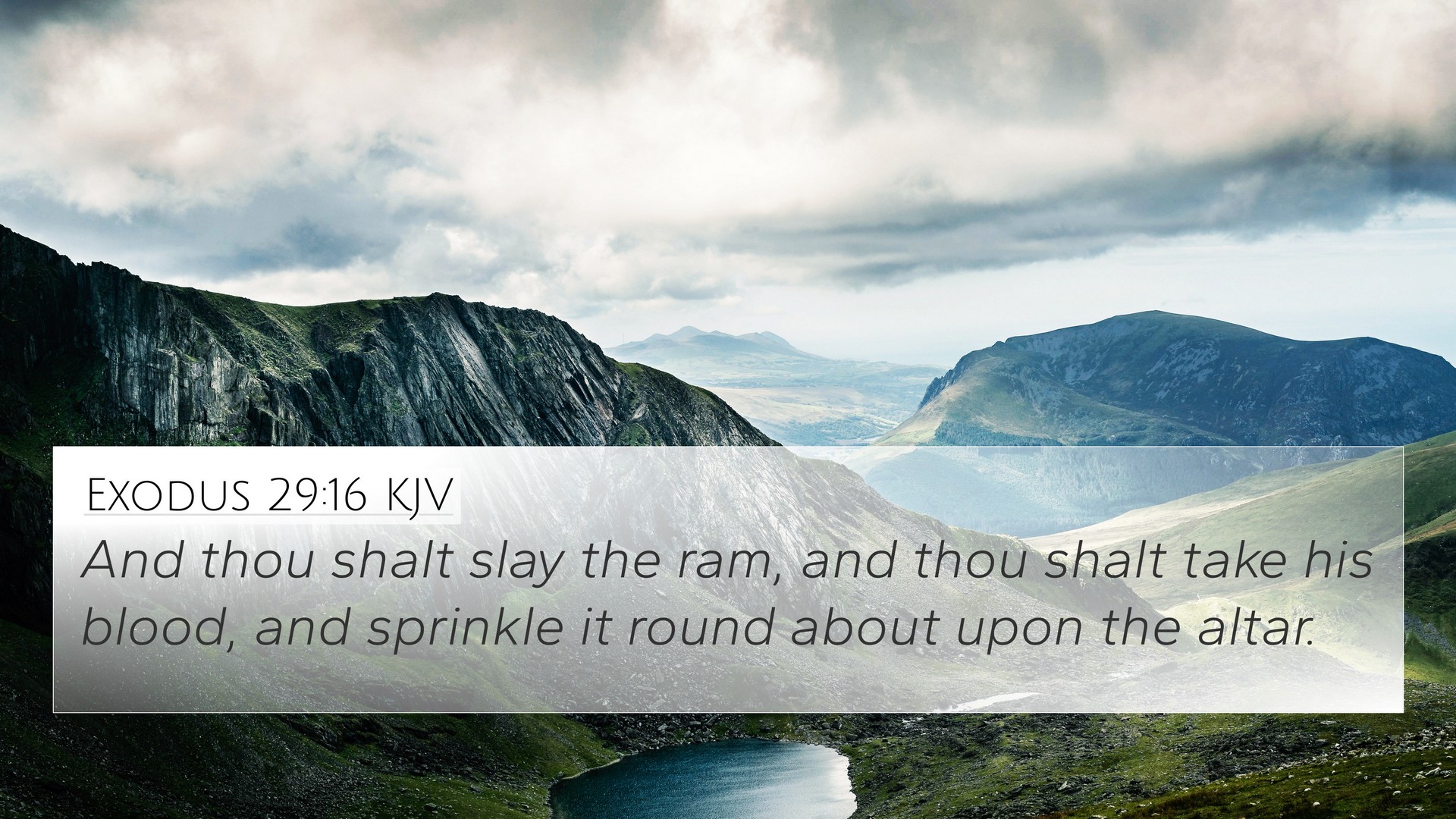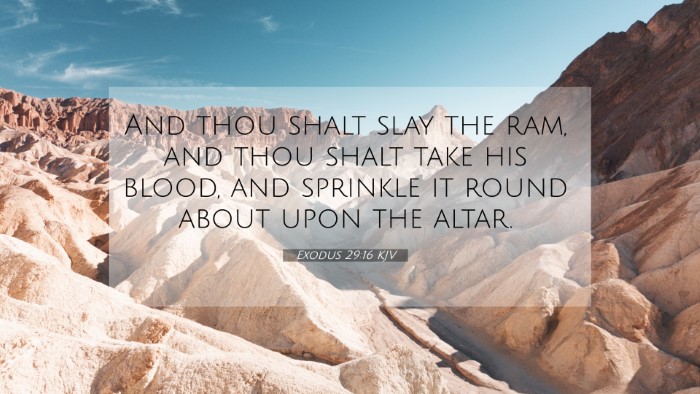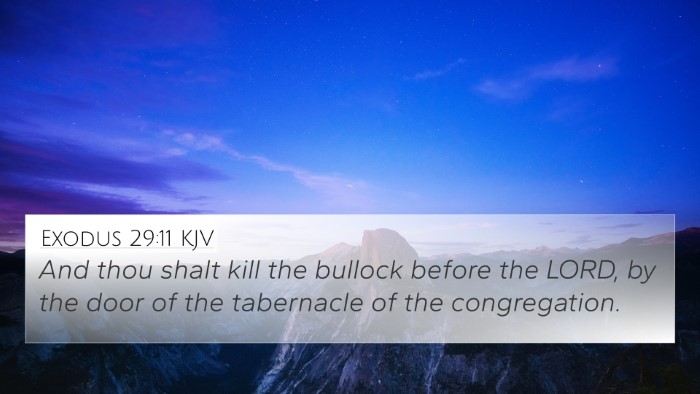Understanding Exodus 29:16
Exodus 29:16 states, "And you shall kill the ram, and you shall take its blood and throw it against the sides of the altar." This verse is integral to the instructions given by God to Moses regarding the consecration of Aaron and his sons as priests. The significance of this verse can be interpreted through various public domain commentaries, providing a comprehensive understanding of its context and implications.
Contextual Analysis
This verse occurs within the larger framework of the priestly consecration ceremony, where sacrifices were essential for the purification and dedication of the priests. The act of sacrificing a ram and using its blood is symbolic of atonement and setting apart individuals for holy service.
Insights from Public Domain Commentaries
-
Matthew Henry:
Henry emphasizes the importance of the blood in sacrificial rites, noting that it represents life and is essential for atonement. He indicates that the blood being thrown against the sides of the altar signifies the sanctification and acceptance of the sacrifice by God.
-
Albert Barnes:
Barnes highlights the theological implications of the blood sacrifice. He points out that this ceremony foreshadows the ultimate sacrifice of Christ and underlines the seriousness of sin and the need for redemption, drawing attention to the nature of God’s holiness.
-
Adam Clarke:
Clarke provides additional insight by discussing the ritualistic elements involved in the sacrifice. He reflects on how these actions signify a covenant and the relationship between God and His people, noting that such rituals were paramount for maintaining fellowship with God.
Thematic Bible Verse Connections
The themes present in Exodus 29:16 resonate throughout Scripture, highlighting the intertwined nature of atonement and divine service. Here are some key thematic connections:
- Leviticus 4:18: Discusses the application of blood on the altar, further emphasizing the necessity of sacrifice for sin.
- Hebrews 9:22: States that without the shedding of blood, there is no forgiveness, reflecting the foundational principle of atonement.
- Romans 12:1: Calls believers to present their bodies as living sacrifices, echoing the call to holiness and service seen in Exodus.
- 1 Peter 2:5: Relates New Testament believers to a holy priesthood, analogous to the priestly ordination described in Exodus.
- John 1:29: Refers to Jesus as the Lamb of God who takes away the sin of the world, linking the sacrificial system to Christ’s ultimate sacrifice.
- Isaiah 53:5: Prophetic reference to the suffering servant whose wounds bring healing, emphasizing the redemptive aspect of blood sacrifice.
- 1 John 1:7: Affirms that the blood of Christ cleanses us from all sin, illustrating the continuation of blood's significance in atonement.
- Exodus 24:8: Discusses the blood of the covenant, reinforcing the sacrificial acts in setting a precedent for God’s relationship with Israel.
- Matthew 26:28: Jesus declares His blood as the blood of the covenant, pinpointing the continuity of this theme from the Old Testament to the New Testament.
Cross-Referencing Biblical Texts
To deepen the understanding of Exodus 29:16, one can utilize tools for Bible cross-referencing to explore connections and themes throughout the text. Here are ways to effectively engage in this practice:
- Utilizing a Bible concordance to locate keywords and themes associated with sacrifices.
- Exploring a cross-reference Bible study that links verses across both the Old and New Testaments, particularly those relating to atonement and priesthood.
- Employing a Bible cross-reference guide to identify similar themes of sacrifice in different books of the Bible.
Comparative Bible Verse Analysis
The connections between Exodus 29:16 and other scripture illustrate the thread of redemption and service throughout the Bible:
- Exodus 12:7: The application of blood during Passover creates a direct parallel to the blood applied in consecration.
- Ephesians 5:2: Encourages believers to walk in love as Christ loved us and gave Himself, paralleling the sacrificial theme.
Final Thoughts
Exodus 29:16 serves as a crucial reminder of the significance of sacrificial rites in the biblical narrative. The act of throwing the blood against the altar not only signifies atonement but also highlights God's call for holiness and relationship with His people. Through cross-referencing biblical texts and understanding the connections between verses, one gains deeper insight into God's redemptive plan and the continuity of themes throughout the scripture.
Resources for Further Study
For those looking to engage more deeply with the theme of sacrifice in the Bible, consider the following:
- Searching for Bible cross-reference materials that provide comprehensive guides on themes of atonement.
- Exploring Bible chain references to see how different scriptures interconnect on the topic of sacrifice.
- Utilizing various Bible reference resources available that delve into Old Testament laws and their New Testament fulfillment.



